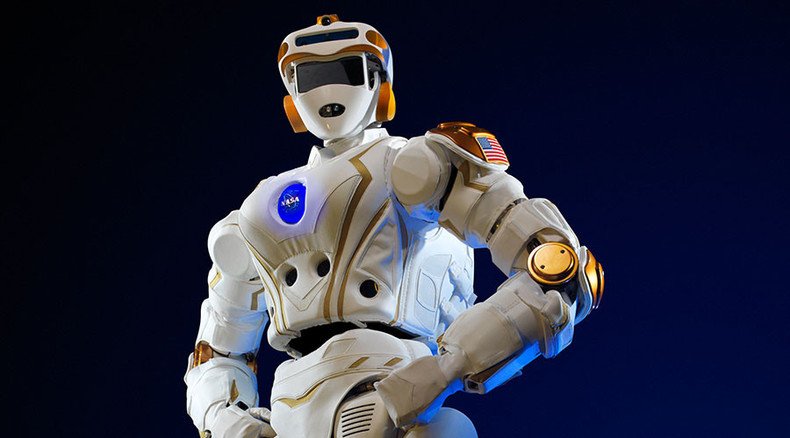R&D boot camp: NASA’s humanoid robots go to universities for special space training

Two of NASA’s Superhero robots are set to travel to Boston, where MIT and Northeastern University researchers will “train” them for future space missions and even a journey to Mars.
NASA hopes that one day its 6-foot tall, 290-pound humanoid robots will be helping mankind in deep space exploration in places as far as Mars.
However, before R5, also known as “Valkyrie,” steps outside our planet, it needs an advanced research and development tone up. NASA has picked two universities to help it with “this next big step.”
“The two university groups were chosen through a competitive selection process from groups entered in the Defense Advanced Research Projects Agency (DARPA) Robotics Challenge,” NASA said.
Both MIT and Northeastern University will be getting as much as $250,000 each per year for two years. Researches are tasked with creating better software for the robots to help them be more autonomous during space missions.
Robots will help on our #JourneyToMars. Two universities awarded prototypes for R&D work: https://t.co/8KwEmwq8BPpic.twitter.com/HFjSpsEXuv
— NASA (@NASA) November 17, 2015“Advances in robotics, including human-robotic collaboration, are critical to developing the capabilities required for our journey to Mars,” said Steve Jurczyk, associate administrator for the Space Technology Mission Directorate (STMD) at NASA Headquarters in Washington. “We are excited to engage these university research groups to help NASA with this next big step in robotics technology development.”
MIT will be focusing on extreme space environments while Northeastern University is set to work on accessible “Testing on Humanoid-Robot-R5” and “Evaluation of NASA Administered (ATHENA) Space Robotics Challenge,” the agency said.
NASA sees great potential in robots like R5, which it says can be used in future space missions to help astronauts work in extreme space environments, such as would be encountered on a journey to Mars.
The award is a sort of 2-in-1 competition for MIT and Northeastern University, which will first have to put their new software through its paces in robotic simulations and then subject the upgraded R5 robots to actual physical trials at the end of the program.












